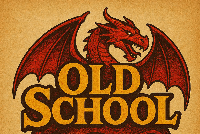Asaram's idea is probably the best for this type of game. I ran a sandboxy game in 3.5 DnD and it ended up well, but the players ran into issues where they wouldn't take enough hooks to finish up quest lines. Creating maps wasn't an issue, but I tend to keep a COMPENDIUM OF ENCOUNTERS on hand, with different (and hopefully interesting) terrains pre-mapped that pair up with the type of encounters that will be abound. I don't plot into every fine detail on the map, I merely copypasta the encounters that i expect to happen (based on storyline) and leave a few out and available in case the players decide "This quest sucks, let's go find a new one!". From there you can pretty much BS your way into making them believe you have an entire world set up before them. In my compendium, I have varying types of beasties that pair well with the terrain at varying CR's, so using this, you can have many encounters off of the same map (though I'd reskin it or switch up some structures before reusing said map..). Sound confusing? Just in case, here's an example of what I do, with a page from my book. Encounter: Gate Guard Synopsis: Ranged combatants rain fire down from atop ramparts and watchtowers while melee units prepare to strike fast and hard at anything charging through the gate into their encampment, which the party seeks to get into. Combat Variables: - Ranged units could include a divine caster compliment to keep them healed/buffed and cast wind walls for added support to defend against enemy fire. Could also include a supplementary arcane blasty type with area effect spells to keep party's melee from the gate. -Gate can be set on fire by party, or as last desperate attempt by defending units to deter the party. -enemy melee units ready/hold action behind the gate to strike anything getting through. Added challenge = include slits for arrows or polearms to fit through to keep party off the gate. -enemy melee units supported by a pair of stealth classes capable of striking from flanking positions or from the shadows behind the gate Party Friendly Variables: - The forested/rocky terrain provides enough cover for one or two sneaky types to stealth past the view of the guards to reach the base of the gates or watchtower -Knowledge (engineering) check provides players with the realization that one of the watchtowers is poorly built and with enough damage to one strut, it will come crashing down, opening a portion of the gate -there is ample cover in front of the gate for ranged combatants to snipe from, or for melee to advance behind. -Knowledge/social skills/disguise: the players know that the bandits beyond the gate are frequented by black market merchants who come to visit every tuesday. The players can utilize this to their advantage (naturally) Next I have whatever beastie/npc's that could fit here in this place. In this case, it's perhaps a bandit camp's front gate or maybe an encampment for hobgoblin mercs, or even the front gate to a mysterious castle. You decide, it's your sandbox. We'll consider this a hobgoblin encampment, since the party heard about some hobgoblin raiders pillaging small farming towns for food. Using some ideas for the different variables, I place a few archers upon the watchtowers, a shaman type of hobgobin for support there, and a good collection of melee guards behind the gate, just chilling out till some hapless heroes decide to mess with them. I don't know how the game of thrones system really works, but with DnD, you can adjust the challenge rating of creatures through advancement, and NPC's can gain/lose levels. If my party is around level 5, then i'll make the hobgoblins around that level of skill, or perhaps more skilled if the night is young and more blood needs to be shed... be it PC or NPC.... I have tips for adjusting monster/npc encounters, but let it suffice for now to say that you must simply tailor these encounters to the party and game style you're setting up. Loot should be another step, but that all depends on what game you're playing too, I guess. Hope this helps. I tend to not make much sense when typing though, so if anything's unclear, just ask and I'll dispel your confusion.










